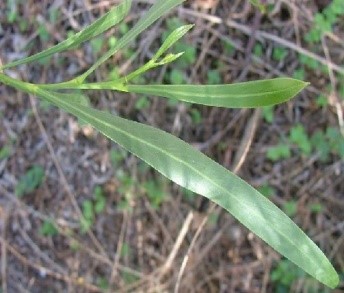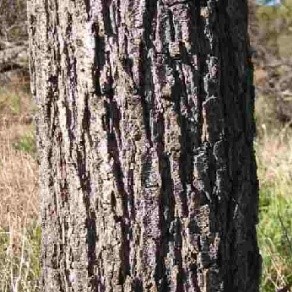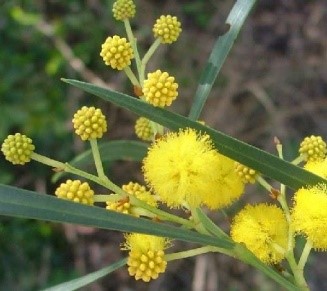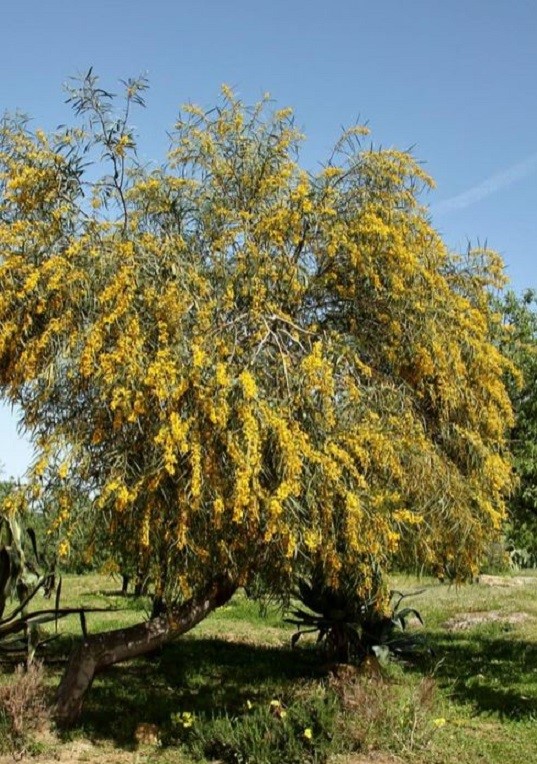Trees
Acacia saligna (Labill.) H. Wendi
Acacia saligna (Labill.) H. Wendi
Description :
An evergreen, dense, bushy shrub usually 2 to 5 m tall which may grow as
a tree to heights of 8 m with a diameter up to 30 cm. Leaves are phyllodes 6 to
12 cm long. The flowers are yellow growing in head like bunches appearing
between March and April. The pods are 11 to 14 cm long and mature during May
and June. It is easily reproduced both from seed and by vegetative means. Seed
will remain viable for several years if cold stored in sealed containers.
Pre-treatment of seed with boiling water, breaking the seed coat, soaking in
sulfuric acid, or exposing the seed to dry heat will increase germination. It
is relatively fast-growing and will yield 1 to 10 m3/ha/yr at 10
years of age depending on the site. This tree is adapted to a variety of arid
sites and soils. It is aggressive and is easily established. It coppices
readily and under certain conditions it can become a serious problem since it
is difficult to eradicate. Young plants need protection from grazing. The wood
is sappy and light.
Distribution :
This tree is native to Western Australia
and has been planted extensively throughout Africa, Central and South America,
and the Subcontinent. In Pakistan it has been planted on the plains of Sindh
and Punjab. It has also been planted in the hills of KP up to 900 m. A
tolerant, drought resistant tree that grows on a variety of sites. It will
tolerate saline, sodic sites and tolerate salt spray. It requires precipitation
of 250 to 1000 mm/yr. It has no specific disease or insect problems.
Uses :
It has potential as a farm forestry tree. It is useful for controlling
erosion and stabilizing sand dunes, and is adaptable on saline, sodic sites.
Also used as fodder, fuel, gum, and land stabilization.



